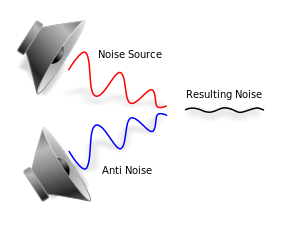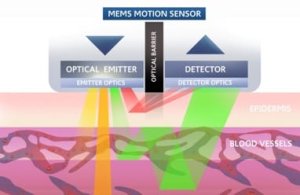Active Signal Characterization for PPG Sensors
The accuracy of biometric wearables continues to get a great deal of attention, which leads more people to ask what makes Valencell’s approach to optical heart rate monitoring different. There are many aspects to answering that question, but this post will focus on one of the most important aspects known as “active signal characterization”. Active signal characterization is a term to describe the process of actively identifying and characterizing different types of raw signal data from the biometric sensors found on many wearable devices today. Think of active signal characterization as similar to Active Noise Cancellation in headphones, but for biometric signals being generated by the sensors in wearables of all kinds, including smartwatches, wristbands, earbuds, or others.
Active Noise Cancellation

Optical heart rate monitoring, also referred to as photoplethysmography (PPG) heart rate monitoring, is obviously very different from audiology and audio noise control, but some similar concepts apply. Recall that optical heart rate monitors work by shining light into the body, measuring the light scattered back, and finding the light signal related to blood flow.

The detectors in these devices capture ALL the light hitting the sensor – blood flow, sunlight, other ambient light, motion noise, and much more. At rest, this isn’t such a problem, as the blood flow signal may be the dominant time-varying signal for someone who isn’t moving their body. But during motion, this presents a huge challenge because the blood flow signal can be as little as 1/1000th of the total light collected by the sensor. This is very much like finding a needle in a haystack.

Engineers having expertise in digital signal processing (DSP) may be tempted to measure the motion with an accelerometer, using this information as a noise reference to subtract motion information from the optical sensor information. This approach can certainly help alleviate motion artifacts, but a key problem with this approach is that not all motion/environmental noise is created equal, and subtraction alone may result in erroneous heart rate results during various physical activities.
This is where active signal characterization comes in. This process proactively identifies the biological, motion, and environmental signals as they come in from both the optical detector and accelerometer and categorizes the data sets in the context of physiological models. The active characterization of the signal data is important, because (as mentioned above) different types of motion noise must be processed differently in order to properly filter the optical (PPG) blood flow signal. Having this information enables accurate heart rate monitoring by:
- Actively filtering the optical (PPG) data to selectively extract biometric information and remove motion noise and
- Assuring that the wearable device continues to track heart rate and not other information (such as motion noise). A great reference for this approach can be found in US Patent #8,888,701.
The motion information collected by the sensors can also be used to facilitate biometric assessments based on both heart rate and motion information. In this way, the signal characterization process supports the ability to get not only a highly accurate heart rate, but also other biometrics such as cardiac efficiency, VO2, R-R interval, and blood pressure. For example, at the high level, cardiac efficiency can be calculated by a person’s cadence divided by their heart rate (Steps per minute/Beats per minute). The basic principle is that the fitter you are, the fewer heartbeats needed to move a footstep. But assessing cardiac efficiency requires being able to accurately identify and distinguish between step data coming in from the accelerometer and blood flow data coming in from the photodetector. A great reference for understanding the dynamics of this calculation can be found in US Patent Application # PCT/US2015/018049.
Such advanced metrics, combining heart rate and motion information, are becoming highly sought after for next-generation wearables, as the wearables market continues to. And without active signal characterization, accurate heart rate and other PPG-derived biometrics (such as respiration rate and blood pressure) become very challenging to achieve, particularly during exercise and vigorous activity. If you are considering adding biometric capabilities to your next wearable device, make sure it uses active signal characterization.